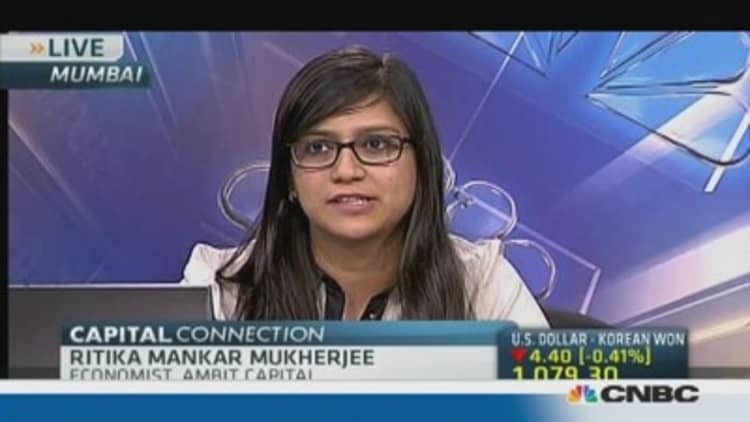
The Reserve Bank of India will have room to cut interest rates when inflation comes down but whether or not the RBI actually cuts the rate is a bit too premature to say, Governor Raghuram Rajan said on Tuesday after hiking rates in a surprise move.
Rajan also said that it was necessary to make the statutory liquidity ratio (SLR) a liquidity function rather than a funding function, but added that he does not see the need to cut the SLR immediately.
Earlier in the day, the RBI unexpectedly raised its policy interest rate by 25 basis points but said that if consumer price inflation eases as projected it does not foresee further near-term tightening.
The policy decision was driven by an expectation that consumer price index (CPI) inflation will remain high, an indication that the RBI is looking to adopt a recent proposal to base its policy rate decisions on a CPI target.
The RBI raised its policy repo rate by 25 basis points to 8.00 percent.
(Read more: India likely to keep policy rate on hold, sound hawkish)
Most economists in a Reuters poll conducted last week had expected no change in rates. However, expectations for a rate hike had increased after a central bank panel proposed to make CPI the main inflation benchmark.
Indian bonds, stocks and the rupee fell after the rate hike but soon recovered most losses on the back of the dovish statement. The benchmark 10-year bond yield which rose as much as 9 basis points following the hike, retreated entirely to continue trading down 5 bps on the day at 8.72 percent.
"For now, this should mark the peak of the rate hike cycle, with the central bank's growth projections close to our conservative estimates at 4.8 percent for FY14 and 5.3 percent for FY15," said Radhika Rao, economist at DBS Bank in Singapore.
The CPI eased to a three-month low of 9.87 percent in December but remains well above the central bank's policy repo rate of 7.75 percent, and the RBI said on Tuesday that consumer inflation risks remain to the upside.
Last week, a central bank panel proposed revamping its monetary policy structure by setting a CPI inflation target of 4 percent, plus or minus 2 percent, over the long term, with a goal of trimming CPI to 8 percent by January 2015 and 6 percent by January 2016.
"An increase in the policy rate ... will set the economy securely on the recommended disinflationary path," the RBI said in a brief policy statement.
(Read more: Rigor and risk in India central bank reform push)
"If the disinflationary process evolves according to this baseline projection, further policy tightening in the near term is not anticipated at this juncture," it said.

The wholesale price index, long the RBI's main price barometer, slowed to 6.16 percent in December.
"It seems like RBI has implicitly accepted the (panel) recommendations implying continued focus on CPI going ahead," said Upasna Bhardwaj, economist at ING Vysya Bank, referring to the central bank panel on revamping monetary policy.
Rajan faces the daunting challenge of reviving an economy growing at a decade low of around 5 percent while battling persistently rising prices, much of which has been fuelled by supply-side shortages beyond the control of monetary policy.
The RBI said CPI inflation is likely to stay above 9 percent during the final quarter of the fiscal year that ends in March, ranging between 7.5 percent and 8.5 percent for the quarter that ends in March 2015, "with the balance of risks tilted on the upside."
(Read more: Policy overhaul coming for India central bank?)
It also said Indian economic growth is likely to fall short of its earlier projection of 5 percent this fiscal year, improving to 5-6 percent in the year that starts in April.

